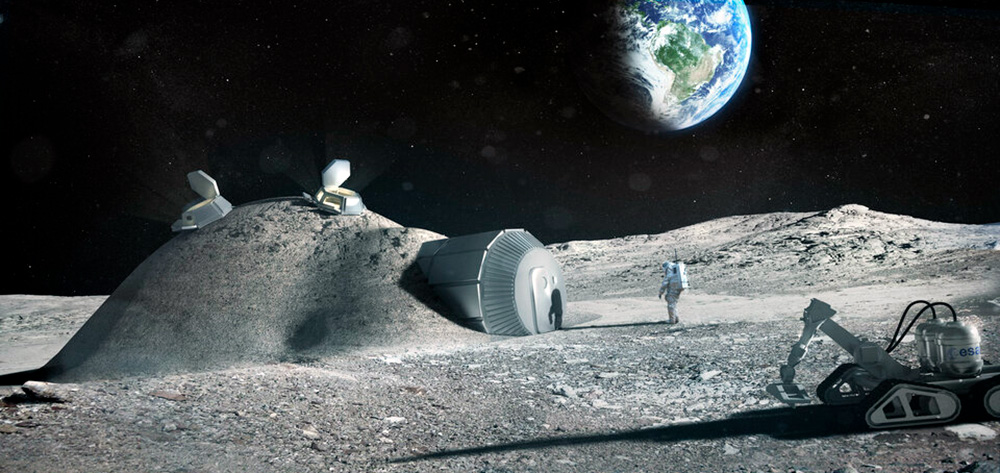
It can cost more than a million British pounds to transport a single brick to Mars. Thereby, making the future construction of a Martian colony appear prohibitively expensive. Scientists at The University of Manchester have produced a concrete-like material. It comprises extraterrestrial dust, as well as astronauts’ blood, sweat, and tears. Also, it is a potential solution to this problem. It is the way for affordable housing in outer space.
A protein from human blood, combined with a compound from urine, sweat, or tears, could glue together simulated moon or Mars soil to produce a material stronger than ordinary concrete. It is perfect for construction work in extraterrestrial environments, according to the study, which was published in Materials Today Bio.
The cost of shipping a single brick to Mars is predicted to be around $2 million. Hence, implying that future Martian colonists will be unable to bring their building materials with them. Also, they will have to forcefully rely on resources available on-site for construction and shelter. (https://www.enov8.com) In-situ resource utilization (or ISRU) is a term that refers to the usage of loose rock and Martian soil (regolith) and scant water deposits. However, there is one resource that will, by definition, be available on every crewed voyage to Mars. It is the human members themselves.
Affordable housing in outer space

Scientists proved that a common protein found in blood plasma, human serum albumin, can work as a binder for the simulated moon or Mars dust. It is to generate a concrete-like substance. AstroCrete is the resulting innovative material. It has compressive strengths of up to 25 MPa (Megapascals). It is therefore similar to the 20–32 MPa seen in standard concrete.
The scientists discovered that adding urea; a biological waste product that the body produces and excretes through urine, sweat, and tears; increased the compressive strength by over 300 percent, with the best performing material having a compressive strength of nearly 40 MPa, significantly higher than ordinary concrete.
The new technique has significant advantages over many other proposed construction techniques on the moon and Mars, according to Dr. Aled Roberts of The University of Manchester, who collaborated on the research.
“Scientists have been trying to develop viable technologies to produce concrete-like materials on the surface of Mars. But we never stopped to think that the answer might be inside us all along”, he said.
“Blood-curdling”
A crew of six astronauts could create over 500 kg of high-strength AstroCrete over the length of a two-year mission on Mars, according to the experts. Each crew member may manufacture enough AstroCrete to expand the habitat to sustain a second crew member if used as a mortar for sandbags or heat-fused regolith bricks, doubling the housing available with each subsequent mission.
Historically, animal blood was utilized as a mortar binder. “It is exciting that a major challenge of the space age may have found its solution based on inspirations from medieval technology”, said Dr. Roberts.
The researchers looked into the underlying bonding mechanism. Then, they discovered blood proteins denature, or “curdle,” to produce an extended structure with “beta-sheet” connections that securely keep the material together.
“The concept is literally blood-curdling,” Dr. Roberts also explained.
